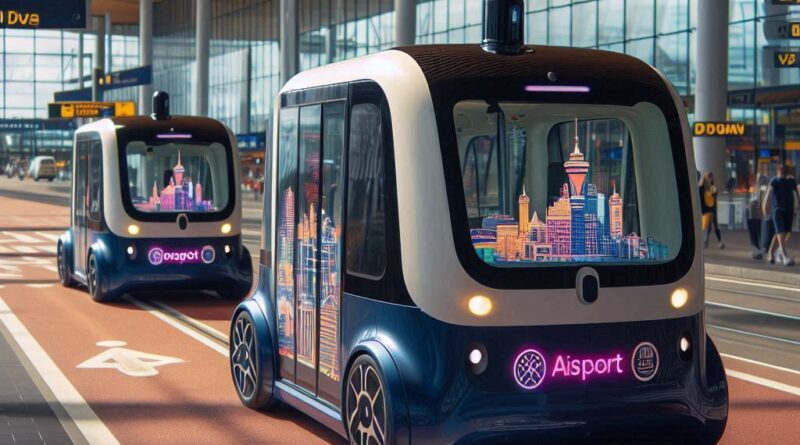Schiphol Airport Trials Self-Driving Shuttles: A Leap Towards Autonomous Transportation”
In a significant move towards the future of transportation, Schiphol Airport has initiated trials for self-driving shuttles. This innovative project aims to streamline airport logistics, improve passenger experience, and contribute to sustainable travel solutions. As one of the busiest airports in Europe, Schiphol’s adoption of autonomous vehicle technology sets a precedent for other airports worldwide.
The Future of Airport Transportation
Schiphol Airport’s trials of self-driving shuttles signify a bold step towards embracing cutting-edge technology in airport operations. The shuttles are designed to transport passengers seamlessly between different terminals and other key locations within the airport complex. By reducing the need for traditional shuttle services, this initiative is expected to enhance operational efficiency and reduce carbon emissions.
How Do Self-Driving Shuttles Work?
The self-driving shuttles at Schiphol Airport are equipped with advanced sensors, cameras, and GPS systems. These technologies enable the shuttles to navigate the airport environment safely and efficiently. The shuttles are programmed to follow specific routes, avoiding obstacles and responding to real-time traffic conditions. This ensures a smooth and reliable service for passengers.
Benefits of Autonomous Shuttles at Airports
- Enhanced Passenger Experience: Self-driving shuttles offer a more comfortable and efficient way for passengers to move around the airport. With precise navigation and timely arrivals, passengers can reach their destinations without the stress associated with traditional shuttle services.
- Operational Efficiency: Autonomous shuttles can operate continuously, without the need for breaks, leading to increased efficiency in airport operations. This can help reduce congestion and improve the overall flow of traffic within the airport.
- Sustainability: By replacing traditional diesel-powered shuttles with electric self-driving vehicles, Schiphol Airport is taking a significant step towards reducing its carbon footprint. This aligns with global efforts to promote sustainable transportation solutions.
- Cost Savings: In the long term, autonomous shuttles can lead to cost savings for airports. Reduced labor costs, lower maintenance expenses, and improved efficiency all contribute to a more cost-effective transportation solution.
Challenges and Considerations
While the introduction of self-driving shuttles at Schiphol Airport is a promising development, it is not without challenges. Ensuring the safety and reliability of autonomous vehicles in a dynamic airport environment requires rigorous testing and continuous monitoring. Additionally, integrating these shuttles into the existing transportation infrastructure involves significant planning and coordination.
Future Prospects
The success of Schiphol Airport’s self-driving shuttle trials could pave the way for wider adoption of autonomous vehicles in airports worldwide. As technology continues to advance, we can expect to see more airports exploring similar solutions to enhance their operations and passenger services.
Recap
Schiphol Airport’s trial of self-driving shuttles marks a significant milestone in the evolution of airport transportation. By embracing autonomous vehicle technology, the airport is setting a new standard for efficiency, sustainability, and passenger convenience. This initiative not only highlights the potential of self-driving shuttles but also underscores the importance of innovation in shaping the future of travel.
Social Media Buzz on Twitter
For more similar stories see here



